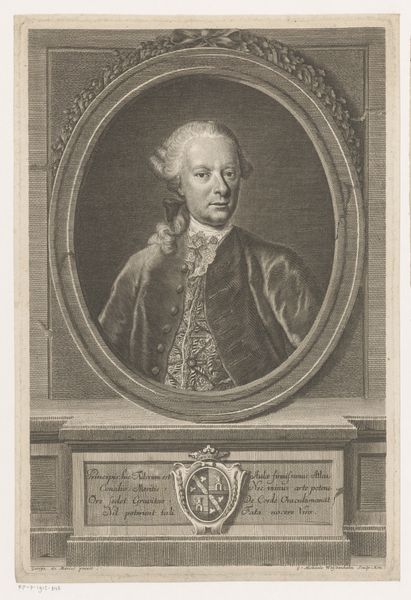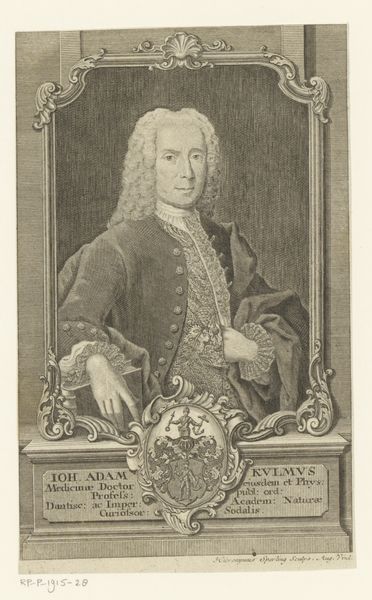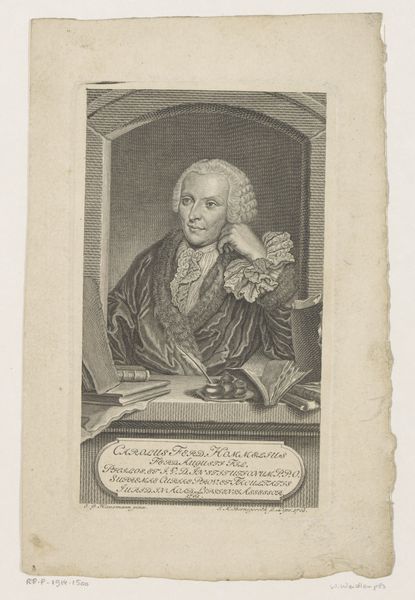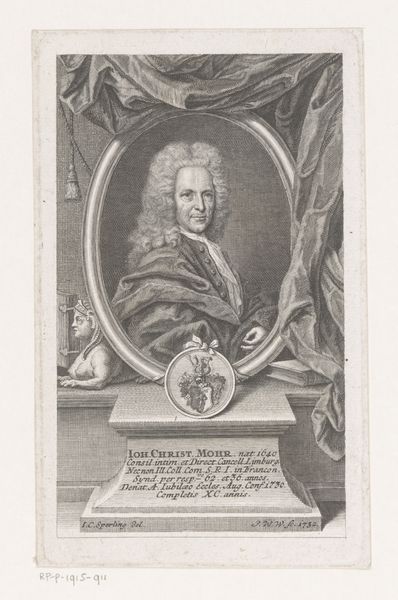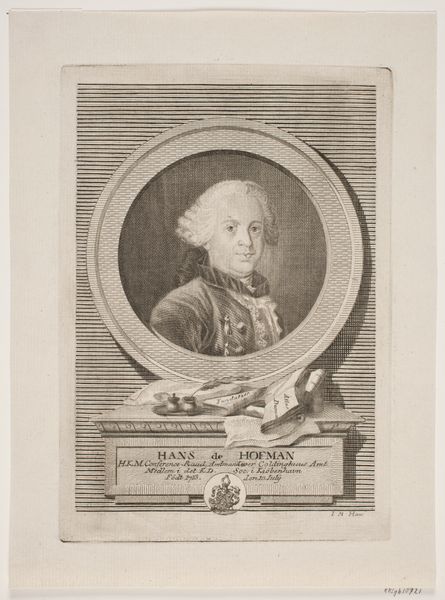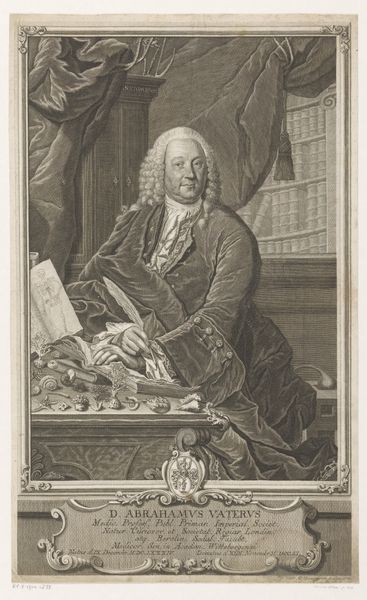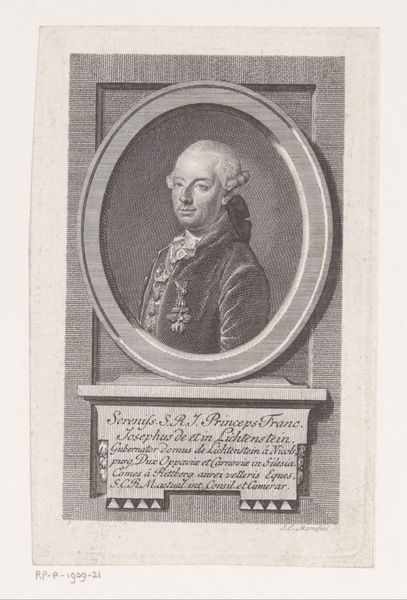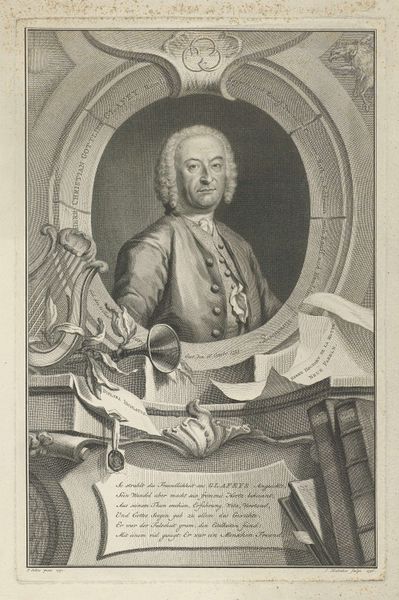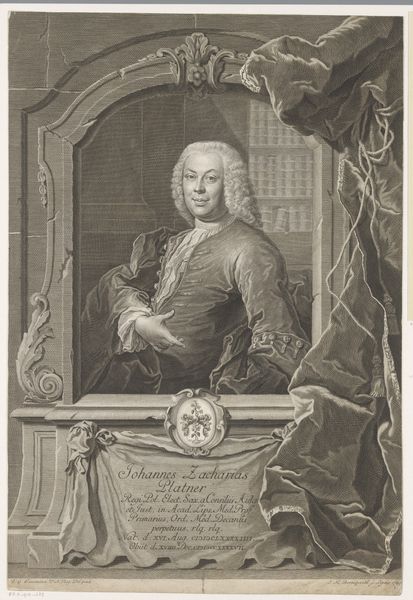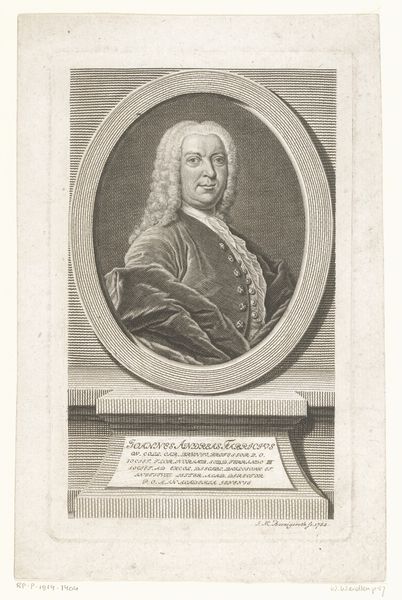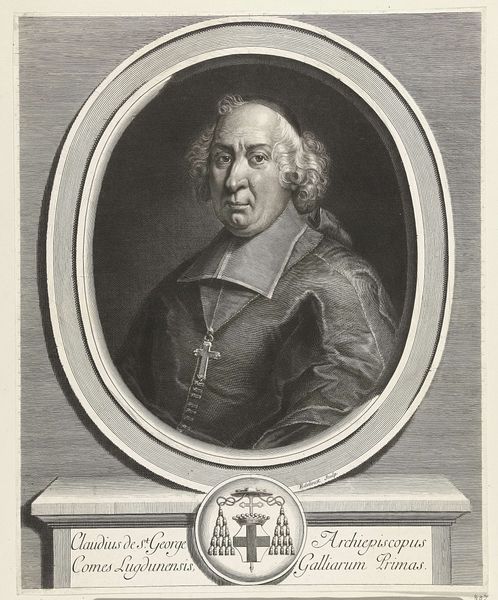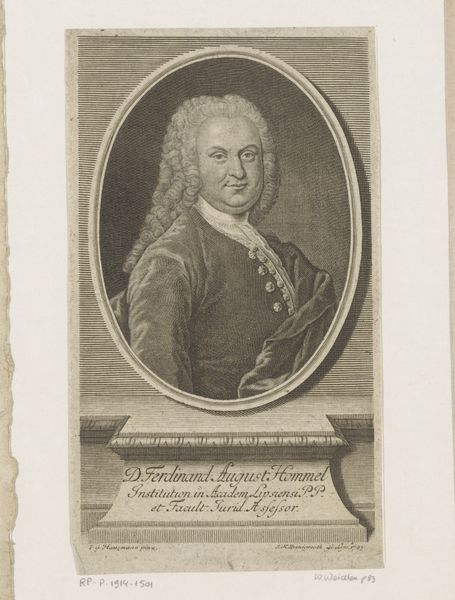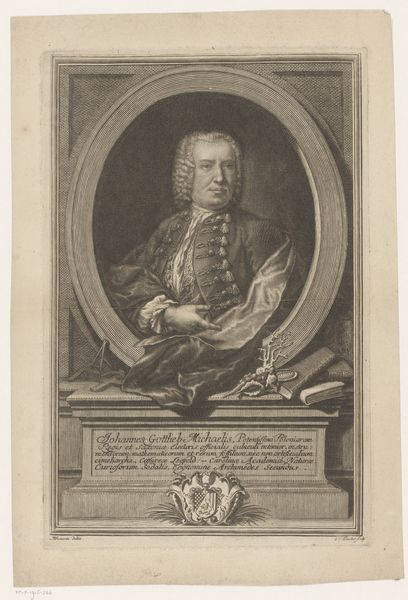
Portret van Wiguläus Xaverius Aloysius von Kreittmayr 1790 - 1796
0:00
0:00
barbaravondrouin
Rijksmuseum
print, engraving
#
portrait
#
neoclacissism
#
aged paper
# print
#
engraving
Dimensions: height 225 mm, width 146 mm
Copyright: Rijks Museum: Open Domain
Curator: This print, residing here at the Rijksmuseum, is a portrait of Wiguläus Xaverius Aloysius von Kreittmayr, created between 1790 and 1796. Editor: It’s a stark, somewhat unsettling image. The limited tonal range heightens the formality, yet something about his gaze feels… vulnerable? Curator: Indeed. Crafted through engraving, this print presents von Kreittmayr, likely a prominent figure, framed within what appears to be a window or niche. The crest, the book labeled 'Cod. Max.', even the subtle window frame all signal specific social statuses and systems of knowledge. Editor: You know, it's interesting how the symbols of power are presented so plainly. The crest, the legal text—it all screams established authority, yet I wonder about the power structures it reinforces and who gets excluded from such imagery. Curator: Precisely, though within the context of late 18th-century neoclassicism, this level of directness can be seen as signaling an intellectual movement focused on reason and transparency in governance. Editor: But how ‘transparent’ can it really be, given who gets to be immortalized and how? What unspoken stories or marginalizations does this portrait erase to maintain its idealized image of power and intellect? Curator: The details themselves are freighted with the expectations of the period. The meticulous lines of the engraving suggest a meticulous man—but again it could be artistic intention driving us. The question, of course, is to understand it critically and contextually. The imagery and its function reflect societal biases of the moment. Editor: Right. While we observe, it's equally imperative to ask ourselves, what is deliberately left unseen in plain sight? Curator: Yes. And I suppose such tension between revelation and concealment drives how lasting symbols find enduring impact. Editor: Absolutely, making them powerful and thought-provoking documents of the past, but also invitations to a more just future.
Comments
No comments
Be the first to comment and join the conversation on the ultimate creative platform.
